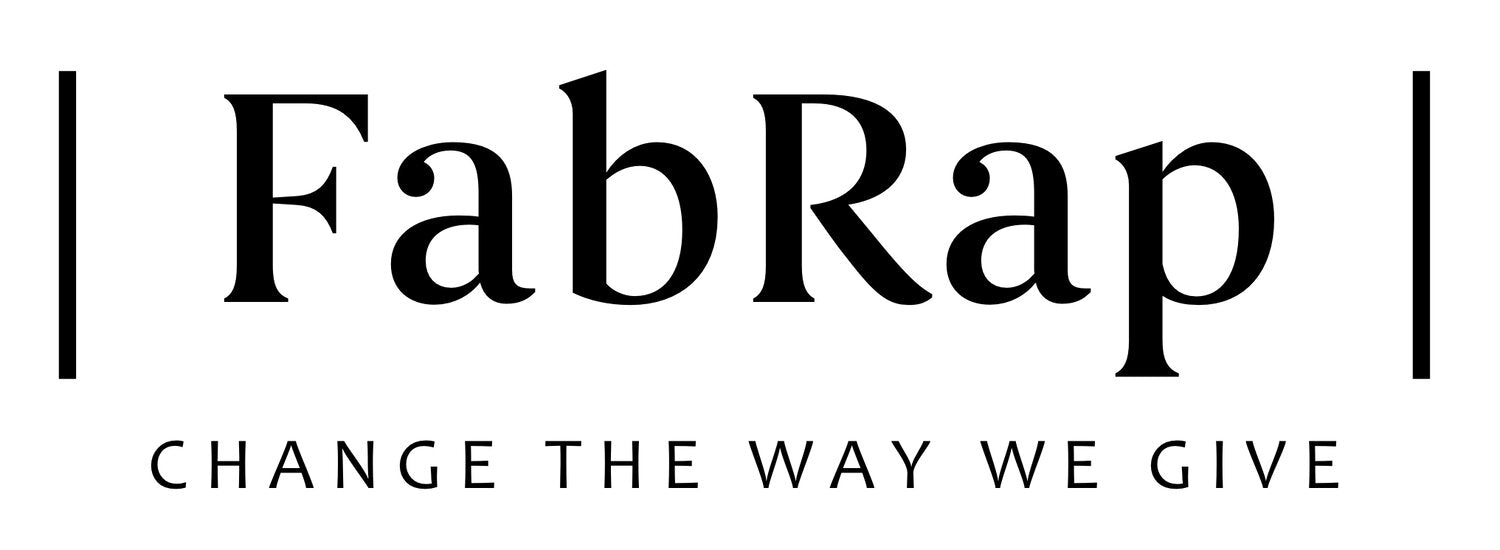If you have been following FabRap for a while, you have probably heard of Furoshiki by now. And even if you haven’t, make sure you keep reading!
In today’s blog post, we briefly explore the history of Furoshiki and hope to encourage you to use the traditional craft in different areas of your own life. Remember, it’s all about being creative!

Furoshiki (風呂敷) is a piece of wrapping cloth or fabric which can be used for gift wrapping, fashion, decor, or transporting items. The craft originated in Japan as early as 719 B.C. during the Nara period, where cloths - then called tsutsumi (= package; present) - were used to wrap important good and treasures. During the Heian period, the cloth - which then was called koromo utsumi - was used mostly to wrap clothing.
During the Muromachi period (1136-1573) the term furoshiki originated. Fun fact: furoshiki literally translates to “bath spread” and it is believed that the fabrics were used for example to stand on while drying after taking a bath, hence the name. During the Edo period (1603-1867) bathhouses became accessible to the general public, which is why the furoshiki initially used by higher-ranking families became more popular among Japanese society. After that, it wasn’t long until the art of Furoshiki was also applied to other parts of life and used to wrap gifts or merchandise, for example.
In 2006, the furoshiki cloth was promoted by Yuriko Koike, the Japanese Minister of the Environment, to reduce plastic waste and to increase environmental awareness.
Very similar to furoshiki cloths, fukasa (袱紗) are Japanese textiles used for gift wrapping or purifying equipment during tea ceremonies. The fukusa was usually draped over gift boxes or trays and was considered an important part of the gift itself, which is why the choice of a fukusa played a vital role! The practice of covering gifts with fukusa also became more widespread during the Edo period. For embroidered fukusa, satin silk was the preferred fabric, while crepe silk was favored as paste-resist dyeing became popular. Fukusa could be decorated with all kinds of motives and themes, such as nature themes, including birds and animals, as well as Japanese folktales and mythology. The fukusa used during Japanese tea ceremonies are always made of silk and vary from tsukai fukasa (for purifying rituals) to ko-bukusa or Dashi fukusa which were used to handle tea bowls (chawan). Although today furoshiki are very popular as an eco-friendly alternative to common wrapping paper, they were traditionally not used to present gifts, since they were considered less formal than fukusa.
The furoshiki can not only serve as a beautiful and eco-friendly alternative to wrapping paper, but can also be used to transport gifts or groceries or to decorate your home. There are countless possibilities to tie furoshiki and the best part about it: it’s not as hard as it looks!
We highly encourage you to be creative with your furoshiki. You can use a fabric you own and love, or maybe you’ll end up loving one of our iconic, high-quality FabRap cloths that are perfect for multiple purposes. Remember, there are no rules to tying furoshiki, you make the rules!
If you need some input, you can check out our Instagram or YouTube Channel for tutorials or browse YouTube or Pinterest to find tips on how to get started. Or perhaps, you want to practice using these instructions for different furoshiki styles provided by the Ministry of the Environment in Japan:


